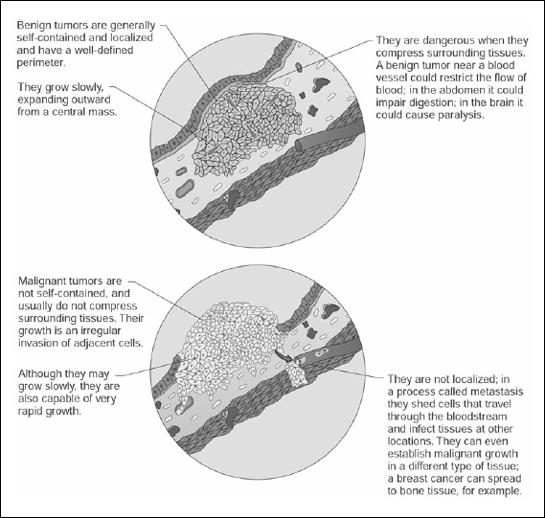Health and MedicineHealth Hazards and Risks |
How does the U.S. Environmental Protection Agency (EPA) classify carcinogens? |
A carcinogen is an agent that can produce cancer (a malignant growth or tumor that spreads throughout the body, destroying tissue). The EPA classifies chemical and physical substances according to their toxicity to humans.
Group A. Human carcinogen
This classification indicates that there is sufficient evidence from epidemiological studies to support a cause-effect relationship between the substance and cancer.
Group B. Probable human carcinogen
B1: Substances are classified as B1 carcinogens on the basis of sufficient evidence from animal studies, and limited evidence from epidemiological studies.
B2: Substances are classified as B2 carcinogens on the basis of sufficient evidence from animal studies, with inadequate or nonexistent epidemiological data.
Group C. Possible human carcinogen
For this classification, there is limited evidence of carcinogenicity from animal studies and no epidemiological data.
Group D. Not classifiable as to human carcinogenicity
The data from human epidemiological and animal studies are inadequate or completely lacking, so no assessment as to the substance’s cancer-causing hazard is possible.
Group E. Evidence of noncarcinogenicity for humans
Substances in this category have tested negative in at least two adequate (as defined by the EPA) animal cancer tests in different species and in adequate epidemiological and animal studies. Classification in group E is based on available evidence; substances may prove to be carcinogenic under certain conditions.

